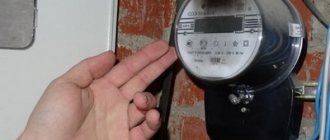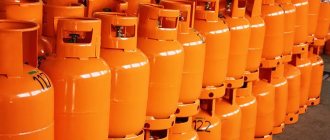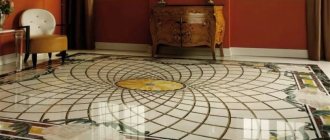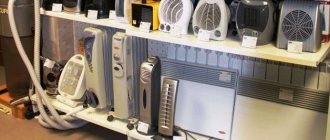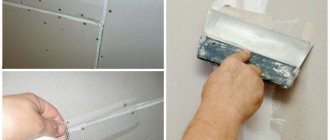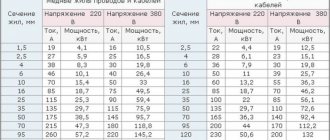It would be nice to reduce your electricity bills without resorting to illegal methods - twisting, attaching magnets, installing additional emitters, etc. Do you agree? This seems unlikely to consumers, but housing and communal services organizations claim that modern two-tariff electricity meters will help save money. Is it really?
In this publication we will talk about what two-tariff meters are and how they work. Let's calculate the real benefits of using a modern metering device and find out which consumers will benefit from installing such a metering device, and who would be better off using a conventional electricity meter.
What is a multi-tariff accounting system?
The amount of energy consumed depends on the time of day, which forces energy specialists to divide the day into several zones:
- NIGHT. Starts at 23.00 and ends at 7.00 am. Its peculiarity lies in the most favorable tariff.
- MORNING (PEAK). This zone starts at 7.00 and continues until 9.00. After rest, people wake up and get ready to go to work. They include many electrical appliances, which leads to a sharp increase in load. In addition, during this period the working day begins in companies and enterprises.
- DAY (HALF PEAK). This period covers a larger range from 10.00 am to 17.00 pm. The “lion’s” portion of people are at work, so the workload is approximately equalized. The largest consumption remains with companies, firms and organizations.
- EVENING (PEAK). In the period from 17.00 to 21.00, the second phase of the highest load takes place, when people return from work and turn on various sources of load, namely washing machines, electric kettles, air conditioners, PCs and other household appliances.
- EVENING (HALF PEAK). This zone is limited to two hours from 21.00 to 23.00. The period is characterized by a gradual decrease in load as people go to bed.
A multi-tariff meter is a special device for metering electricity that controls each of the mentioned periods. Thanks to this mode, the network is unloaded during peak hours due to the transfer of part of the power to the night or weekends.
The use of differential metering allows you to reduce costs, which is especially important for enterprises with a round-the-clock operating cycle or with short interruptions in the work of consumers.
Buying a multi-tariff meter is considered a profitable investment for manufacturers of various products. With this approach, it is possible to reduce the cost of goods and thereby increase profits.
To effectively use such devices, it is important to understand the intricacies of the operation of such meters and determine the relevance of their use.
As for apartments and houses, there are enough metering devices designed to work with two tariffs.
Problem of choice
When it comes to installing a metering device in an apartment, some users are perplexed. Which one to choose: single-tariff or multi-tariff meter? What is the difference? Which one is considered optimal and for which networks is it suitable? All these questions seem too complicated at first. And to answer them, you need to understand the fundamental essence of these devices and make some preliminary calculations.
What is a two-tariff meter, how it works
The essence of a two-tariff meter is simple. Unlike a standard meter, it controls consumption in two zones - daytime (from 7.00 to 23.00) and night (from 23.00 to 7.00), which allows you to split the payment for electricity.
In the first case, the standard tariff applies, and at night it is significantly lower. If you plan to use powerful consumers at night, using a two-tariff meter is the way to save money.
The relevance of the transition to such devices is easy to explain. It is important for power plants and substations that the load on equipment is uniform throughout the day. In practice, it is higher in the morning, afternoon and evening hours than at night. As a result, equipment operates at its limit and breaks down faster.
The widespread use of two-tariff meters allows for load balancing, that is, transferring part of the load from peak hours to night time. As a result, fuel consumption is reduced and the service life of equipment at power plants increases.
Video description
This video is about smart meters: what are they and should you be afraid of installing them:
See also: Catalog of companies that specialize in electrical work of any complexity
Electricians' note
It is worth noting the observations of specialists, which are based on the requirement to move meters in the private sector to the street. Based on Resolution No. 442, paragraph 138, the accuracy class should be at least second. Such a device can be used in conditions from -20 to +55 degrees Celsius with a humidity level of up to 80%. With other indicators, the error in the meter readings increases. Although the companies that control expenses claim that a coefficient has been introduced for calculating payments that takes this fact into account.
Installation of equipment on the street Source electro-znatok.ru
Wave load
If we consider electricity consumption at the “lower level”, the graph looks like a sinusoid. For example, in a building with a large number of apartments, people rest at night, and a small part of electrical appliances (refrigerator, PC, night light and other devices) are in operation.
Between 7 and 10 a.m. the situation changes and the load curve rises sharply. People get out of bed and start getting their children ready for school, getting ready for work and solving other problems. As a result, many electrical appliances turn on, from the TV to the electric kettle and boiler.
Then the residents go to work, and the load situation returns to normal - the curve goes down again and remains there until the evening, when people return from work and start doing household chores - swimming, watching TV, heating food in the microwave, cooking in the oven, and so on Further. As a result, the current consumption increases again and reaches peak values.
The maximum load occurs until 10-11 pm, after which people gradually go to sleep, and the cycle repeats. It's time for another overnight low. To avoid the fluctuations discussed above, two-tariff meters are being introduced. Their feature is load control in only two zones, namely at night and during the day.
Reducing tariffs at night and increasing them during the day encourages people to switch to new metering devices. As a result, both sides win.
The consumer saves electricity and receives payments with smaller amounts, and the electricity supplier relieves substations and power plants, thereby extending the life of expensive equipment. The risk of network failures due to peak loads is also reduced.
A person who has installed a two-tariff meter can turn on the machine, boiler and boiler at night, when the electricity tariff is lower, and turn them off in the morning.
Time of night and day tariff
We have already discussed this issue above, but we will cover it in more detail.
Fixing a price for a specific zone helps with the following tasks:
- Reducing load during peak hours;
- Reducing energy consumption;
- Protection of the home electrical network from damage or tripping of protective equipment.
Many people have been in a situation where, due to the inclusion of a large number of receivers in the electrical panel, the machine is knocked out. The reason is excessive load that exceeds the permissible level. For this reason, the input to the house or even the switch at the substation may be turned off.
The transition to a night tariff is relevant for rural residents, who will be able to turn on the heating of their home, greenhouse, and other premises only in the dark. As a result, heating costs are reduced by 30-40%, and sometimes more.
As noted, the two-tariff meter operates in two zones - from 23.00 to 7.00 (night) and from 7.00 to 23.00 (day). However, the night range may vary depending on the number of zones:
- Between 11 am and 7 am. With a two-zone tariff, electricity costs are reduced by 30% for ordinary consumers (individuals) and by 40% for companies (legal entities).
- Between 11 am and 6 am. If a three-tariff meter is used, the payment is even lower. In this case, the payment for night use is 35% of the regular rate (for ordinary citizens) and 40% for companies.
Solution from BAGAN.
The use of heaters based on REN, with reduced heat generation power (up to 35W), covered with a layer of thermal insulation and mounted on the body of the electric meter. This prevents overheating and cracking of the case under the influence of sudden changes in ambient temperatures.
One-piece design of two (or three) flat heating elements based on REN, fixed with metal brackets on the side walls of the meter. To ensure mechanical strength and reduce heat losses, the outer side of the heating elements is covered with insulation. At the top of the heating elements there are contact pads to which network conductors are soldered. To ensure electrical safety and reliable mechanical fastening of the conductors, the soldering points are covered with a protective plate. An LED indicating the operating status is located on the terminal block. Connection to the 220V network is carried out using the included cord.
The product is constantly modified and improved.
Electric meter heaters (EMHs) are commercially produced.
- PES-1 without thermal control;
- PES-2E with temperature control (electronic thermal limiter, turns on heating at a temperature below that specified by the customer).
This is a specific product that is purchased in bulk and for a specific size and climatic conditions. Therefore, all details on the product are clarified with our managers upon application.
Heater PES-1.
It is allowed to operate it at an average daily temperature of up to 5°C. At higher average daily temperatures, the PES-1 heater must be turned off. Disabling the PES-1 heater is not necessary, but a recommended action.
Heater PES-2E.
The heater is equipped with an automatic electronic temperature limiter, which turns on the heater at a temperature below the set temperature (prevents the object from being removed). At temperatures above the set temperature, the heaters are turned off. The heating switch-on temperature is set by the Customer when making a purchase.
When the average daily temperature is above plus 10°C, it is recommended to turn off the heater.
Like all cables included in the self-regulating category, ELSR-N consists of a pair of power wires located in parallel and a semiconductor matrix in which carbon molecules are present.
When the temperature rises during operation, the molecules increase in size. The consequence of this is the expansion of the plastic and an increase in the distance between carbon particles. As a result, the output power decreases against the background of increasing resistance. If the temperature drops, the power output will increase.
This property allows you to prevent the heating temperature from going beyond acceptable limits, therefore, a self-regulating cable can be used without a thermostat.
Current tariffs (using the example of Moscow and the Moscow region)
The amount of payment for electricity for two-tariff meters depends on three factors - the type of slabs in a multi-storey building, the time of day, month of the year, and the region. Let's look at the main options.
Multi-storey buildings with apartments with gas stoves
- In the period from January 1 to June 30, the night and day zone tariffs for Moscow are 1.79 and 6.19 rubles, and for New Moscow - 2.24 and 6.03 rubles, respectively.
- During the period from July 1 to the end of 2021, the following tariffs apply at night and daytime: 1.92 and 6.19 for Moscow and 2.41 and 6.19 for New Moscow.
Multi-storey buildings with electric stoves
- From January 1 to June 30, the night and day zone tariffs for Moscow are 1.26 and 4.65 rubles, and for New Moscow - 1.58 and 4.41 rubles, respectively.
- From July 1 until the end of 2021, the following tariffs apply at night and during the day: 1.35 and 4.95 rubles for Moscow and 1.7 and 4.74 rubles for New Moscow.
Apartments and houses located in rural areas
- From January 1 to June 30, the night and day zone tariffs are 1.58 and 4.22 rubles, respectively.
- From July 1 until the end of 2021, the following tariffs apply at night and during the day: 1.7 and 4.34 rubles.
Two-tariff electricity meter table
Full version of tariffs for 2021.
See all changes in tariffs for the next years on the website https://mosenergosbyt.info/tarify/.
Electric meter connection
First of all, we will prepare the meter for connection. To do this, unscrew the sealing screw located in the center of the bottom cover of the meter.
Remove the protective cover. As a rule, on its back, the manufacturer always places a diagram for connecting the electric meter.
How do you pay?
To make a payment you will need a receipt with the accrued amount for the light, a calculator and a pen.
The algorithm of actions is as follows:
- We take readings from a two-tariff meter for the day and night shifts.
- We take the old receipt, according to which payment was made for the last month, and subtract the previous parameters in the section “On the day of payment” from the figure of the new readings. We multiply the resulting number by the tariff that is valid in the city (region) of residence.
- We subtract from the number of “night” readings the data that is recorded in the old receipt in the column “On the day of payment”. We multiply the resulting number by the tariff that applies to the night zone.
- Sum up the received figures for the day and night, after which we make a payment taking into account the result obtained at the nearest bank branch or in another way (for example, at a Russian Post office).
Video description
This video shows how readings are taken from the Mercury 200.02 model:
Based on user reviews, shortcomings in each meter were identified. Mercury does not have a display backlight and you have to select a large electrical box. Energomera's craftsmen note a weak point in the assembly. Owners write only about the advantages, including backlighting and the ability to take readings without voltage.
Three-tariff meter with display backlight Source alicdn.com
Advantages and disadvantages of two-tariff meters
When connecting a two-tariff meter, it is important to consider the pros and cons of such a transition. Let's take a closer look at them.
Advantages:
- For the consumer - a reduction in electricity costs by an average of 30-40%. This is due to the lower cost of electricity at night.
- For energy supply organizations - uniform distribution of load within 24 hours, which reduces overload during peak hours and helps to increase the service life of equipment.
- For the environment - reducing the volume of harmful emissions due to the uniform operation of the power plant.
- For enterprises, it saves energy at night, which helps reduce costs and production costs.
Flaws:
- Electrical appliances are left on at night, resulting in increased noise levels.
- Two-tariff meters are expensive and, according to users, often fail.
When is installing a two-tariff meter beneficial?
To determine the relevance of installing a two-tariff meter, it is important to take into account a number of parameters - the presence of powerful equipment in the house or apartment, as well as the electricity tariff in the region.
To calculate efficiency, a number of steps are required. First, let's find out the price of 1 kW for a standard and two-tariff meter. After this, the amount of energy consumed at night is measured.
Once the declared parameters are in front of your eyes, you can substitute them into the following formula:
Mon = 100 x (Td - T1)/(Td - Tn), where:
- Mon—energy consumption at night;
- Тд — price of the daily tariff;
- Тн — cost of the night tariff;
- T1 – the price of a 24-hour tariff (on the meter this is a day zone, do not confuse it).
The final result is given as a percentage. For example, if it turns out to be 30%, this means that to get the effect you will have to increase the level of consumption at night by 30%. Only with this approach can we talk about the relevance of the new two-tariff meter.
If consumption at night is higher than the calculated parameter, this is only a plus.
Let's look at an example. We take the numbers from the photo below.
We get (6.19-5.38/6.19-1.92) x 100 = 18.9%.
How to choose a two-tariff meter?
Before purchasing a meter that records the amount of energy consumed in two different zones, it is important to study market offers and understand the nuances of such devices. Below are recommendations that will help you avoid making mistakes with your purchase.
What to look for when choosing?
Before buying a device, it is worth checking with your local energy supply organization about the possibility of installing such a meter and the availability of tariff divisions. It is important to remember that a multi-tariff device will cost more, so its installation should pay for itself. Otherwise, there is no point in installing the device.
It is also worth finding out the number of tariff levels, which can be 2 or more. A number of modern two-tariff meters have a large reserve and allow you to program up to eight or more modes.
Principle of operation
The electricity metering devices under consideration are divided into two types (according to the principle of operation):
- Electronic;
- Induction.
The latter are an outdated version of the device that was previously installed in all homes. The device consists of a coil that creates an EM field that rotates the disk.
Electronic devices are built on a semiconductor circuit that converts current into pulses. The latter are recorded by a counting device. Electronic metering devices are conventionally divided by the type of indication - it can be electromechanical or digital (the numbers are reflected on a special display).
It is logical to assume that multi-tariff devices can only be electronic and with digital display of indicators on a special screen. By the way, this feature makes a number of adjustments to the installation location. Such displays are afraid of direct sunlight and low temperatures. Under such conditions, the display may not display information at all.
That is why the device should be mounted in a special heated cabinet and away from sunlight.
Accuracy class
Based on this indicator, one can judge the maximum error of the device. This parameter is reflected as a percentage. If induction meters had a class of 2.5, new devices operating on a semiconductor base are more accurate - up to 0.5.
To find out this parameter, you should look at the technical documentation of the device or look at the device itself. The accuracy class is indicated as a number “hidden” in a circle.
The lower the number, the more accurate the device. When choosing, it is worth considering that for private houses an accuracy class of 2 and higher is allowed. As for class 1.0, it is mandatory for the input of buildings whose power is more than 0.67 MW.
In addition, according to the law, even with a low accuracy class, no one has the right to force the meter to be changed. This is done only at the end of the inter-inspection period or in the event of a product breakdown.
If employees of an electricity supply organization demand that the old device be replaced and a two-tariff meter with class 1.0 be installed, such actions are illegal.
Currents (single-phase, maximum, three-phase)
Most apartments in populated areas are connected to a single-phase 220V network with a frequency of 50 Hz. This means that when choosing a metering device, it is important to focus on this indicator.
But there are exceptions to this rule. In some houses where there are electric stoves, a three-phase network with a voltage of 380 Volts is supplied.
You can recognize a 3-phase network by the special type of plugs and sockets. Under such circumstances, you will have to buy an appropriate device connected to three phases.
Another important nuance is the maximum load current (maximum and minimum). Most devices are designed to carry a current of 60 A, which is enough for a house or apartment.
If calculations show that the total power of electrical consumers is more than 10 kW, it is recommended to take a meter with a maximum current of 100 A.
The peculiarity of such devices is that they are connected directly and without the use of additional converters. If the load exceeds 100 A, you will have to connect additional equipment (current transformer).
To find out the voltage and current parameters discussed above (min and max), just look at the technical data sheet of the device or look at the front panel.
What else to consider when choosing?
When studying the models available on the market, it is important to pay attention to additional functions. For example, many devices provide communication via GSM with the transfer of information to local stations.
In addition, devices are sold that control other types of resources, including gas and water.
Additional options also include:
- Entering electricity consumption parameters by month;
- Taking instantaneous parameters of current, power and other parameters and reflecting them in the log;
- Other functions.
Characteristic features of single-tariff devices
Single-tariff devices read information about the consumed amount of electricity consumed at a single established tariff. It “winds up” kilowatt after kilowatt at a clearly established fixed rate for each of them, without switching from one built-in meter to another.
The very principle of calculating energy consumption in this regard is similar to the good old induction meters. Unless they worked due to magnetic fluxes and an aluminum disk inside the device, and electronic models reflect information directly on the indicator board.
But their similarity lies in the fact that every day the user consumes electricity and knows that at the time of paying for the services of the energy sales company, he will simply need to multiply the “inflated footage” of a kilowatt by a specific tariff established within the framework of the state pricing policy for this resource.
Popular models
Today, three models of two-tariff meters are most in demand on the market - MZIP, Energomera and Mercury. Let's take a closer look at them.
Mercury
Mercury meters are produced by , which produces a wide range of metering devices - from conventional 1-phase devices to more complex 3-phase models.
The products are manufactured at a high technical and scientific level, which makes NPK Incotex one of the best companies today.
Now the company produces other products - cash registers, automated accounting and control systems, various types of screens and displays, POS and other equipment.
Popular multi-tariff meters include the following Mercury models:
- Three-phase - 256 ART, 234 ARM (2), 230 ART, 231 AT, 231 ART Sh.
- Single-phase - 206, 203.2T, 201.8 TLO, 200.
Official website of the company https://www.incotexcom.ru/.
Energy meter
The Energomera company positions itself as the Russian market leader in the production of metering devices. Every year, more than 3 million metering devices are produced at the enterprise's factories. Moreover, over 20 years of operation, more than 30 million devices have been produced.
The company includes 4 factories and 1 institute. In addition to two-tariff meters, the company produces ASKUE systems, low-voltage equipment, metrological and switchboard equipment, devices for electrochemical protection and other equipment.
Popular models of multi-tariff meters include:
- Single-phase - CE 102-R5.1, CE 102M-R5, CE 102-S7, CE 102M-S7, CE 201-S7.
- Three-phase - CE 307-R33, CE 301-R33, CE 307-S31, CE 303-R33, CE 303-S31.
Official website of the company https://www.energomera.ru/.
MZEP
At the moment, the Moscow MZEP plant is considered one of the best in the field of manufacturing metering devices. Every month, the plant produces more than 100,000 devices, which are used both in private homes and in large organizations.
The company's products are certified and meet internationally accepted quality standards. Before sale, the plant's two-tariff meters are tested by the metrological service, and their compliance with the requirements is confirmed by certificates.
Popular multi-tariff models of the manufacturer:
- Single-phase - AGAT 2-12, AGAT 2-23M, AGAT 2-23M1, AGAT 2-27M, AGAT 2-42.
- Three-phase - AGAT 3-1.100.2, AGAT 3-1.5.2, AGAT 3-1.50.2, AGAT 3-3.100.5, AGAT 3-3.60.2.
Official website of the company https://mzep.ru/.

